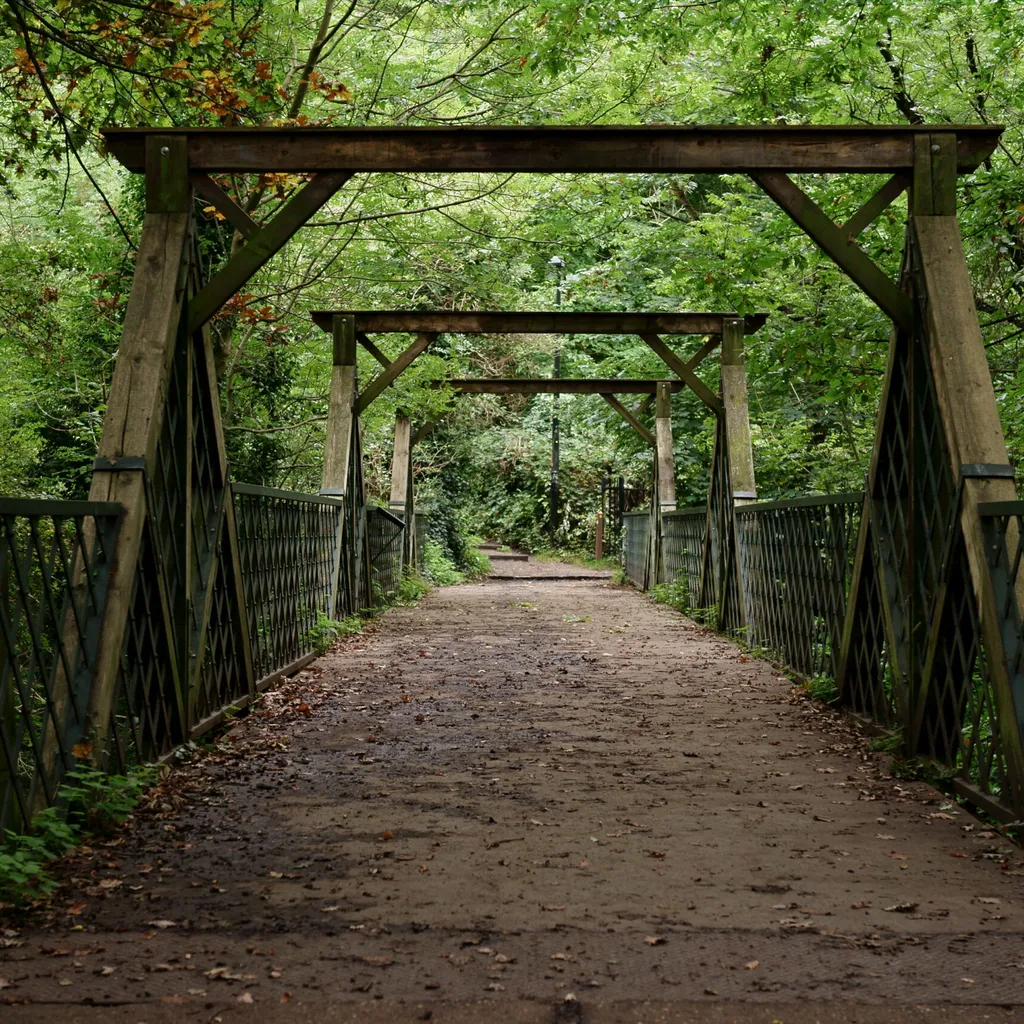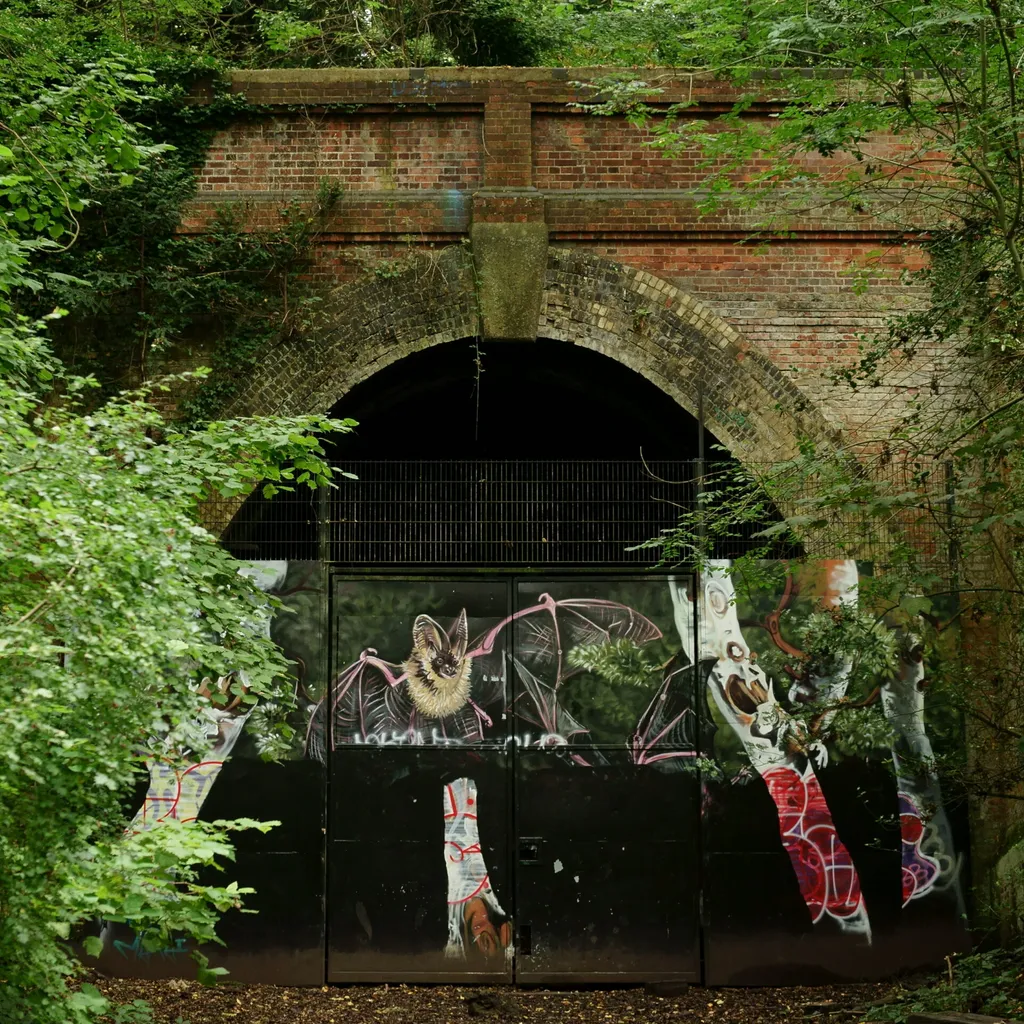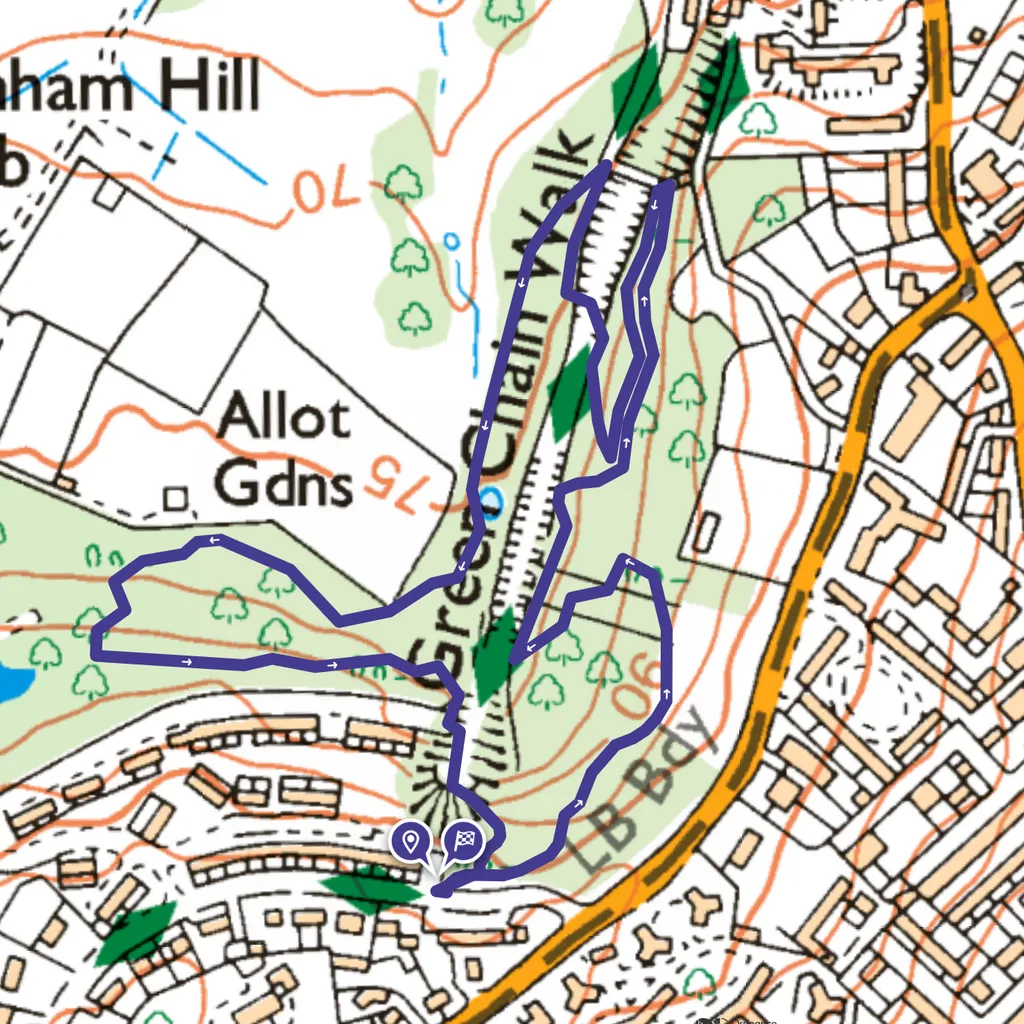Sloping from one of London’s highest points down to the South Circular, this is the last remnant of the ancient Great North Wood that once stretched from the Thames to Croydon.
Now home to rare fungi, insects, birds and mammals, and more than 200 tree and plant species – there are plenty of fallen trees, branches and logs to climb, swing from or sit on. The dense tree cover blocks out the city’s sounds and sights, and reveals a railway tunnel that took Victorians to the Crystal Palace, a folly, and a memorable bridge – and a spectacular view of central London landmarks.
- Greatest city walks in the UK
- Kew Gardens to Richmond Park walk, London
- Finsbury Park to Stoke Newington walk, London

Sydenham Hill Wood walk
1.5 miles | 1 hour | easy | 52m ascent
1. Start
Through the black gate, turn right at the wooden post numbered ‘1’, down timber-edged steps past ‘dead hedges’ (woody cuttings woven between vertical stakes).
This ‘ancient woodland’, has been recorded here for at least 400 years, with certain flowers, including English bluebell, wood anemone and sweet woodruff, indicating its longevity. Trees here were reserved by Elizabeth I for shipbuilding, hornbeam was coppiced for charcoal-making and oak bark went to Bermondsey’s leather-tanners. In the late 18th and early 19th centuries, trade declined and London expanded, shrinking the Great North Wood.
Near post 2 were the gardens of Victorian houses built on Sydenham Hill, around the time the glass-and-cast-iron Crystal Palace was moved nearby from Hyde Park, where it had housed the 1851 Great Exhibition. The Palace gave its name to the area formerly known as Upper Norwood (from ‘north wood’). After these houses were demolished, the wood swallowed the gardens.
By the wooden footbridge at post 3 is a former garden resident, a cedar of Lebanon, and the wood’s largest tree. In the early 1980s the wood was saved from development by London Wildlife Trust, becoming its first nature reserve.
At a crossroads by post 4, turn left for the folly, a ruined Romanesque stone arch and window. Not as ancient as it appears, it was built in 1866 as a garden feature for a later Mayor of London.

2. Tree tunnel
You’ll come to a T-junction with the central path, the old railway line, which opened in 1865 to take visitors to the Crystal Palace. The blocked-off tunnel entrance is to the left.
Turn right. The tree canopy of silver birches, sycamores and oaks thins here. Further along is a ‘hotel’ for stag beetles (only found in south-east England), with adults emerging in May.
3. Cox’s Walk
Carry on, down log-edged steps, to Cox’s Walk footbridge, which opened in 1854. In 1871 the French impressionist Camille Pissarro painted Lordship Lane Station from the bridge. It’s currently closed, due to local authority works to protect two ancient oak trees. If it’s open, cross and see step 4. If closed, retrace your steps.
Turn right at the junction, downhill on a path edged with long logs. Rejoin the railway track and turn right towards the footbridge. The path beneath it is fenced off to allow regrowth. Facing the bridge, turn left, join a path and turn right. On the left you’ll see the lush greens of Dulwich & Sydenham Golf Club.

4. Dulwich Woods
On the bridge’s other side is a sign saying Dulwich Woods. The two woods, effectively one, were split by the railway. Turn your back on the bridge, take the right-hand fork on a slight downward slope and follow the path around to the left. Turn left off the path. On your left is a pond with an island, home to frogs and smooth newts, as well as southern hawker dragonfly, common blue and red-tailed damselflies. Continue in the same direction.
5. Dulwich College
Continue along the edge of Dulwich Wood with allotments over the fence on the right and 1960s-built houses to the left. On the path running parallel to the fence, between the trees is a stunning view: Dulwich College (a public school founded in 1619, with old boys including Sir Ernest Shackleton, Bob Monkhouse and Nigel Farage) and onward to the BT Tower and Houses of Parliament, which reminds you how close you are to central London: it’s five miles to Big Ben.
Turn away from the fence and head right, skirting the houses. Come back on to the trackbed and turn right towards the tunnel, which is a massive bat roost. Follow the steep path over the top of the tunnel, pausing to pose on the column top. Return up the stepped path to the entrance gate.
Sydenham Hill Wood map
Sydenham Hill Wood walking route and map

Useful information
Starting point:
Crescent Wood Road, London SE26 6RZ. Bus 202, 356, 363. Sydenham Hill rail station, walk up steep Low Cross Wood Lane, turn left on Crescent Wood Road (tfl.gov.uk). Free parking: Crescent Wood Road.
Terrain
Entrance gate. Earth and compacted sandy gravel paths. Slopes and steps. May be muddy. Unsuitable for wheelchairs/pushchairs.
Map
OS Explorer 161
Eat/drink
Dulwich Wood House (thewoodhousedulwich.co.uk), 39 Sydenham Hill, London SE26 6RS, large Victorian pub with garden bar, at one of London’s highest points: 112 metres. Snuffle dog café and wine bar (snuffledogcafe.com), 109 Wells Park Road, London SE26 6AD. The Moustache café-bar (themoustache.co.uk), 99 Kirkdale, London SE26 4BL.
Stay
Fox & Hounds, 150 Kirkdale, London SE26 4BB (thefoxandhoundspub.com); Crown & Greyhound (‘The Dog’), 73 Dulwich Village, London SE21 7BJ (thecrownandgreyhound.co.uk)
Need new walking kit? Check out our guides to the best walking boots, best walking shoes, best walking trousers, best walking socks, best walking sandals - and lots more
